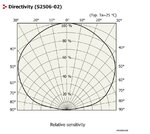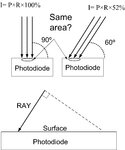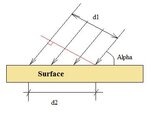timedate
Member level 5
Hi, all
I get a question for "directivity" for the photodiode?
Below is the "directivity" for S2506 from hamamatsu.


Does it mean when the light is incident to the photodiode Vertical. I= P*R , where I is the current, and R is responsivity , unit in A/W.
And when the light is incident at some angle, for example 60 degree. I= P*R * 52%?
Am I right?
I get a question for "directivity" for the photodiode?
Below is the "directivity" for S2506 from hamamatsu.


Does it mean when the light is incident to the photodiode Vertical. I= P*R , where I is the current, and R is responsivity , unit in A/W.
And when the light is incident at some angle, for example 60 degree. I= P*R * 52%?
Am I right?
Last edited:

